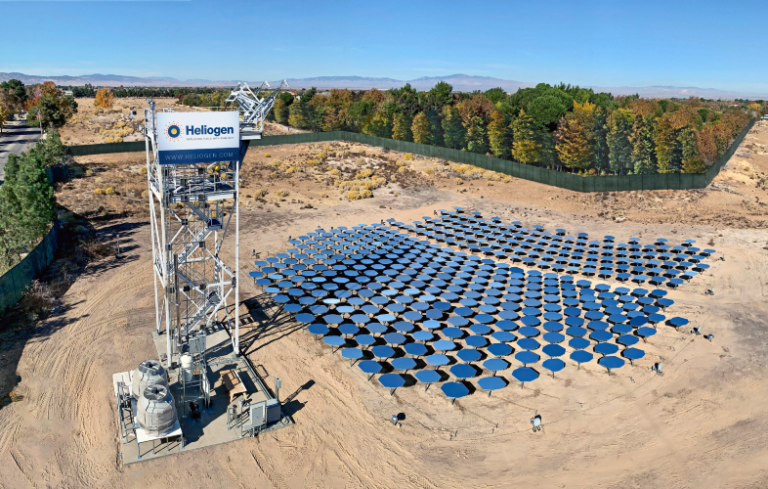
Pasadena-based solar technology company Heliogen Inc. recently signed a contract with the city of Lancaster to produce “green hydrogen” to be purchased by Lancaster for the city’s growing green hydrogen fuel needs.
Heliogen also announced an agreement with Culver City-based NantGPower, a member of the Nant family of companies controlled by Patrick Soon-Shiong, to develop a pilot solar calcination facility at Heliogen’s Lancaster site that could be used to reduce carbon emissions from cement production and lithium extraction.
The contract with Lancaster, announced on June, 6 builds upon a previous memorandum of understanding between the two parties. It calls for Heliogen to produce green hydrogen — which is produced from water electrolysis using electricity from renewable sources — at its Proxima hydrogen facility in that city. The production process centers around Heliogen’s technology using artificial intelligence and advanced computer vision software to concentrate sunlight with mirrors, which in turn heats water to produce hydrogen through electrolysis.
As part of the agreement with the city of Lancaster, Heliogen will certify the hydrogen’s carbon intensity, a measure of the CO2 emitted per kilogram of hydrogen produced. Heligen is giving Lancaster a discounted price of $10/kilogram of hydrogen produced, about half the current pump price for hydrogen gas.
“We are excited to advance our strategic relationship with the city of Lancaster and support its needs for green hydrogen fuel at scale,” Christie Obiaya, Heliogen’s chief executive, said in the announcement.
The agreement with NantGPower, announced on June 20, calls for Heliogen to supply engineering services for the development of a pilot solar thermal calcination facility. Financial terms were not disclosed.
Calcination refers to the heating of a material – such as limestone that’s used in cement production – to remove carbon or expel other impurities; it’s the central process of turning limestone into calcium oxide, the crucial ingredient of cement. The resulting carbon dioxide is then emitted into the atmosphere – unless it is contained or somehow converted.
Heliogen’s technology eliminates the need for fossil fuels to be used to generate the heat necessary for calcination, though it does not address the release of carbon dioxide from the limestone itself.
